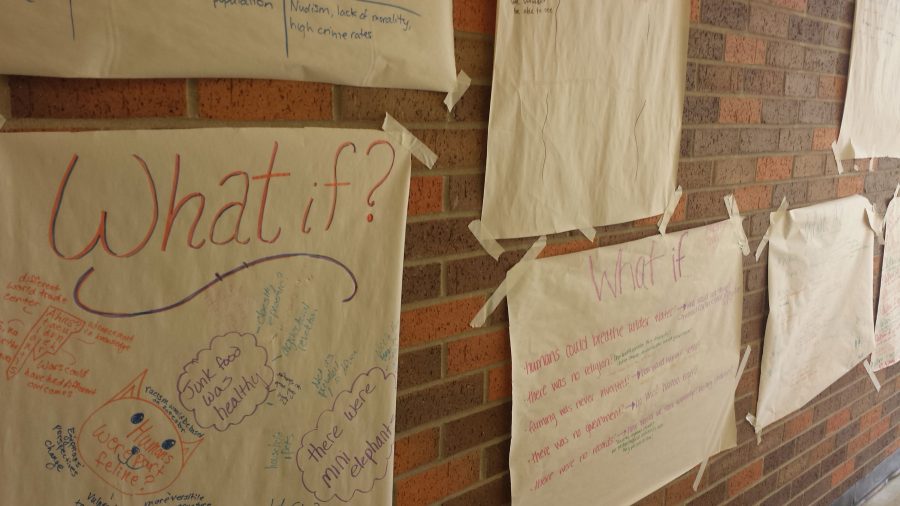
Sophomore Neil Cathro listened with part determination and part dread to their description of the year’s curriculum: the templates and essays they had to write in just the next eight weeks, the week of testing they were required to go through and the weekly reading assignments.
Never-ending work was becoming the norm associated with AP World.
Even during the week of snow days, the teachers expected their students to complete a 70-question multiple choice test, not to mention the nearly four hour practice test students had to take during the weekends to prepare for their AP World exam.
“The teachers said at the beginning of the year that it was a lot of work,” Cathro said. “But they also said that they would help us and provide us with tools to succeed.”
Now, as the school year comes to a close, their last and final project is a What if…? Presentation, merging multiple school subjects.
Social studies and English are already components merged in AP World finals, but this spring, Biology will be added into the mix. Although AP World teachers have always avoided a paper and pen final, this is the first year the final will be a What if…? presentation. With the prompt individualized to each student’s own What if…? question, students will give a talk about the effects of the alternative world they present through their What if…? question.
Along with a different final format, AP World classes are collaborating with Honors Biology classes, extending the What if…? presentation as the final for both classes. Students will record their What if…? presentation and turn it in twice, creating one final that counts for AP World and Honors Biology.
“Over the last few years, we’ve been having a lot of conversations about integration, about integrating different classes because the world that we live in isn’t boxed off by arbitrary courses,” AP World Studies teacher Katherine Sasser said. “The world that we live in is completely complex and skills that we think students need transcend classrooms, things like being able to think critically and problem solve and collaborate with each other.”
Packaging the semester final is a welcome idea for students in AP World and Honors Biology classes.
“There’s more time to prepare, and it’s not just black and white,” AP World student Quinn Miller said. “It’s more about creativity and we get to do our own thing.”
For teachers, not only can they emphasize life skills, they can also provide students with experiences that can lead to success in the world.
“If we can show students that there are these relevant skills that they need in the world of work and if we can use both the Social Studies, the Language Arts, and the Bio classroom to kind of help facilitate development in those skills, we think that its really valuable for students,” Sasser said. “On top of that, finals are a really stressful, intense time for students, so if we can combine a final from three courses into one and make that a more fluid process for students as opposed to having five different finals for five different courses, we feel like that would be helpful, too.”
But students who are only in one class, either in AP World but not in Honors Biology or vice versa, are caught between two projects.
Cathro, who is in AP World but not in Honors Biology has to complete a What if…? Presentation for AP World, but a TED talk for regular Biology.
“It hasn’t really affected me as much as I expected. Sasser is still helping me with my regular Bio project, but we’re just using the What if…? process to do…the TED Talk,” Cathro said. “They’re really similar, and the AP research process has actually helped me a lot with my TED talk because its forced me to use more reliable sources.”
Even with minor setbacks in this collaborative effort, Sasser has high hopes for the results.
“The ‘What if…?’ question is really open, so a student could really ask anything, and hopefully it would trigger something in them that interests them, so something in their potentially future field or just something they’re passionate about,” Sasser said. “When students can invest in something they care about in school, they create products and they create projects that are phenomenal.”
By Alice Yu
Should finals continue to be integrated between classes? Leave your questions and comments below.













































































